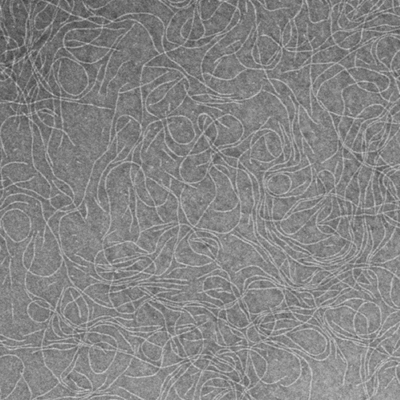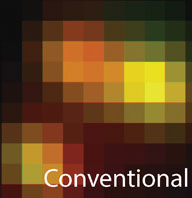About
The main goal of our group is to use Super Resolution Microscopy (nanoscopy) to visualize and track in living cells and tissues self-assembled nanomaterials with therapeutic potential (nanomedicine).
The understanding of materials-cell interactions is the key towards the development of novel nanotechnology-based therapies for treatment of cancer and infectious diseases.
Our group aims to use a multidisciplinary approach, at the interface of chemistry, physics and biology, to develop novel nanomaterials for the treatment of cancer and infectious diseases.
We aim at the development of novel nanocarriers for drug delivery based on self-assembly, i.e. able to build themselves. Molecular self-organization is ubiquitous in the biological world and represents for us a source of inspiration for the design of nanostructures with biomedical potential. In particular we focus on the development of self-assembled nanoparticles and nanofibers able to selectively target diseased cells and deliver locally therapeutic moieties such as drugs and genetic material (e.g. DNA, siRNA, mRNA).
A key point towards the development of novel nanotechnology-based therapies is the understanding of the behavior of nanomaterials in the complex biological environment. Here we use super resolution microscopy to track nanomaterials during their voyage in the biological environment and to visualize the interactions with blood components, immune system and target cells.
We make use of a variety of super resolution techniques based on single molecule detection such a stochastic optical reconstruction microscopy (STORM), photoactivated localization microscopy (PALM), point accumulation for imaging in nanoscale topography (PAINT), and single particle tracking (SPT). These methods allow to achieve a resolution down to few nanometers and are therefore ideal to visualize nanosized synthetic objects in the biological environment. Super resolution microscopy provides a molecular picture of structure-activity relations and represent a guide towards the design of innovative materials for nanomedicine.



Projects
| INTERNATIONAL GRANTS | FINANCER | PI |
|---|---|---|
| NANOSTORM Design of Nanomaterials for Targeted Therapies Guided by Super Resolution Imaging (2018-2023) | ERC, European Commission | Lorenzo Albertazzi |
| THERACAT BIO-orthogonal catalysis for cancer therapy (2018-2022) | MARIE CURIE, European Commission | Lorenzo Albertazzi |
| NATIONAL GRANTS | FINANCER | PI |
|---|---|---|
| STROMATARGET · Polímeros supramoleculares dirigidos al microambiente tumoral: validación mediante técnicas de microscopía avanzada (2020-2023) | MINECO: Retos investigación: Proyectos I+D | Silvia Pujals |
| Collaborative Research Projects AOM-BIST | BIST | Lorenzo Albertazzi |
| Understanding and measuring mechanical tumor properties to improve cancer diagnosis, treatment, and survival: Application to liquid biopsies (2017-2021) | Obra Social La Caixa | Lorenzo Albertazzi |
| FINISHED PROJECTS | FINANCER | PI |
|---|---|---|
| NANOVAX Nanovacunas diseñadas para inmunoterapia antitumoral (2016-2020) | Acciones de Programación Conjunta Internacional, MINECO | Lorenzo Albertazzi Josep Samitier |
| TARGETSTORM Nanomateriales para terapias dirigidas contra el cáncer visualizados con microscopia de súper resolución STORM (2016-2019) | Retos investigación: Proyectos I+D, MINECO | Silvia Pujals |
| SGR Grups de recerca consolidats (2017-2019) | SGR, AGAUR | Silvia Pujals |
| Novel approaches for Pandemic Virus Targeting Using Adaptive Polymers (2015-2017) | AXA Research Fund | Lorenzo Albertazzi |
Publications
(See full publication list in ORCID)
News
THERACAT Project: hitting cancer bull’s-eye
Researchers from the European project THERACAT, coordinated by the Institute for Bioengineering of Catalonia (IBEC), have been working for the last four years in developing new strategies to treat cancer … Read more
Unraveling the cell’s sweet spot from nature
In a recent Nature chemical biology paper, a team of researchers from ICMS/TUE and IBEC, together with researchers from Leiden University unravel the interactions of individual sugar molecules with cells using super-resolution microscopy. The paper appeared on the cover of the November issue of the journal.
New chemical lego blocks for health solutions
IBEC researchers develop new multi-responsive molecules able to self-assemble in water forming fiber-like structures. The so-called discotic molecules show responsiveness to temperature, light, pH, and ionic strength and they might show great potential for medical applications such as drug delivery systems, diagnosis or tissue engineering. Edgar Fuentes is a PhD student in the Nanoscopy for Nanomedicine Group led by Lorenzo Albertazzi at the Institute for Bioengineering of Catalonia (IBEC). Within this group, Edgar and his colleagues focus on the synthesis of novel smart supramolecular materials for drug delivery.
ERC President visits IBEC
The President of the European Research Council, Jean-Pierre Bourguignon, visited last May 15th the Institute for Bioengineering of Catalonia (IBEC). The event was inaugurated by IBEC’s Director, Josep Samitier, who presented an overview on the cutting-edge research carried out at the institute in the fields of bioengineering and nanomedicine. Afterwards, ERC Grantees working at IBEC had the opportunity to explain the impact of ERC grants on their professional careers and established a dialogue with ERC President on the past, present and future of the European Research Council.
Two more juniors consolidate as full group leaders
Lorenzo Albertazzi and Nuria Montserrat, IBEC’s Junior Group Leaders selected in the 2014 Tenure Track programme, have been successfully consolidated as Group Leader as of 1st January 2019, following a positive evaluation by the ISC. IBEC’s tenure track programme aims to support career development by helping young researchers establish their own independent research lines. Other factors considered included the added value offered by their projects to the current IBEC research programme, and the ability of the selected candidates to carry out efficient group leadership and management. The first four junior group leaders selected by the programme in 2012 – Eduard Torrents, Elisabeth Engel, Pere Roca-Cusachs and Xavier Fernández-Busquets – were all successfully consolidated as Senior Group Leaders as of 1st January 2017.
Super-resolution imaging guides the design of biocompatible microswimmers
Two IBEC groups have clubbed together to combine their expertise and reveal new knowledge that could advance the design of micro- and nanomotors for applications in health. By harnessing the unprecedented resolution of Lorenzo Albertazzi’s group’s STORM microscope, Samuel Sánchez’s group – in collaboration with Erik Schäffer’s group at the University of Tübingen – have been able to reveal new information about how their enzyme-powered nanomotors achieve motion.
Synthetic enzymes for controlled drug delivery in cells
The Nanoscopy for Nanomedicine group has studied Single-Chain Polymeric Nanoparticles (SCPNs) mimicking enzymes as possible drug activators in biological environments, like the living cell. The bio-inspired nanoparticles could be used to spatially control drug delivery in the treatment of diseases such as cancer. Through their study, published in JACS, the researchers have optimized the delivery strategies of dynamic SCPNs so that they retain their catalytic activity at the cellular environment. This paves the way towards the rational design of nanosystems that can perform effective catalysis in vivo.

